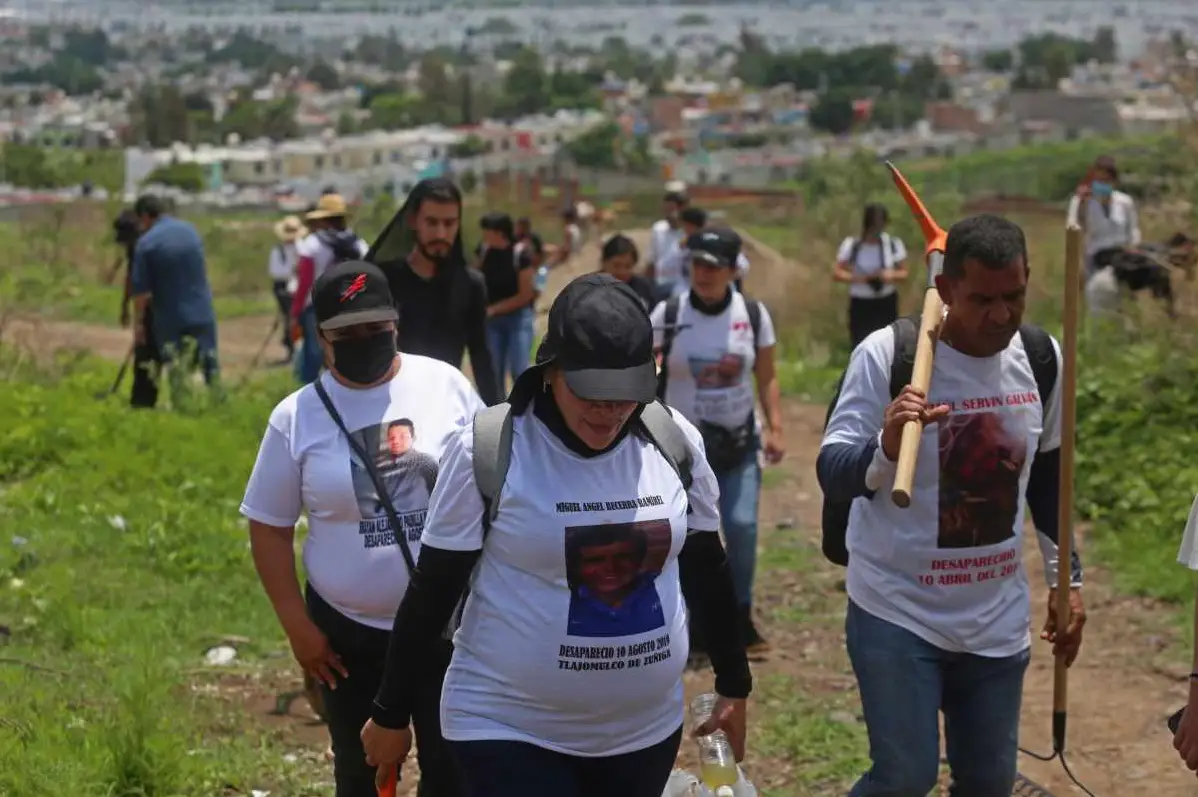Guerreros Buscadores is one of several collectives, made up mostly of searching mothers, that have been formed to locate missing persons, mainly due to circumstances related to organized crime.
This collective gained notoriety when, on March 8, they found evidence in the municipality of Teuchitlán, in the state of Jalisco, that the Izaguirre Ranch was being used as a training camp—and possibly an extermination site—by one of Mexico’s main criminal groups.
This discovery is just another episode in the deep crisis of disappearances that has gripped Mexico since the 1970s, a crisis that has worsened since 2006 with the start of the “war on drugs.”
At this point, the number of disappearances has surpassed 125,000 people. And while this number grows day by day, the official state narrative seeks to downplay the problem.
The case of the Izaguirre Ranch is a clear example: following the discovery, statements, justifications, and official communications from the Mexican government shaped a narrative focused on fragmenting responsibilities—either blaming previous administrations or other states for failing to control their criminal elements, or distancing itself by attributing the violence to clashes between organized crime groups.
In particular, the debate has centered on whether or not the ranch was an extermination center. While the collectives insist—based on their experience and testimonies—that people were burned there, the government has repeatedly affirmed, through various officials, that it was “only a training camp.”
Although the current administration has shown some willingness to acknowledge the problem, unlike the previous one, which did not engage with the searching mothers or collectives at all, the official narrative has been committed to minimizing the number of disappeared and the constant discoveries of clandestine graves.
The absence of this dialogue and the labyrinthine narrative wear down the public image of the searching collectives, enable the rise in disappearances, and—most importantly—carry out a “double disappearance” of the victims: the first at the hands of organized crime, the second by the State.
The latter takes place insofar as the official narrative of indifference toward the disappeared and the collectives dissolves the possibilities for collective action. Among the general public, it plants doubt about the severity of the problem, and, as a consequence, a second disappearance—this time enacted by the State—takes place.
This “double disappearance” deepens the sense among the population that they have been robbed of the ability to care for their dead or missing, by stripping away the social nature of their disappearance or death. Without a body to which they can bid farewell in ritual, the official narrative seems to tell us that there are lives not worth mourning, lives that do not deserve to be part of society and its rites.
Although the reasons for these disappearances are varied (family problems, mental illness, organized crime recruitment dynamics), the lack of a clear strategy and adequate funding for prosecutors, public ministries, and other institutions means that the disappeared and the bodies buried in clandestine graves are either never found or pile up in morgues until they can no longer be identified.
Undoubtedly, the disappearance crisis in Mexico places us in a state of daily vulnerability. The searching mothers and the collectives stand as examples of struggle and resistance, fighting for a government that takes responsibility for its people, and for a democracy built from the bottom up—through collective action—that can prevent us from falling into a double disappearance: one caused by organized crime, and the other by the State.
The former out of cruelty, the latter out of irresponsibility.
*Machine translation proofread by Janaína da Silva.













